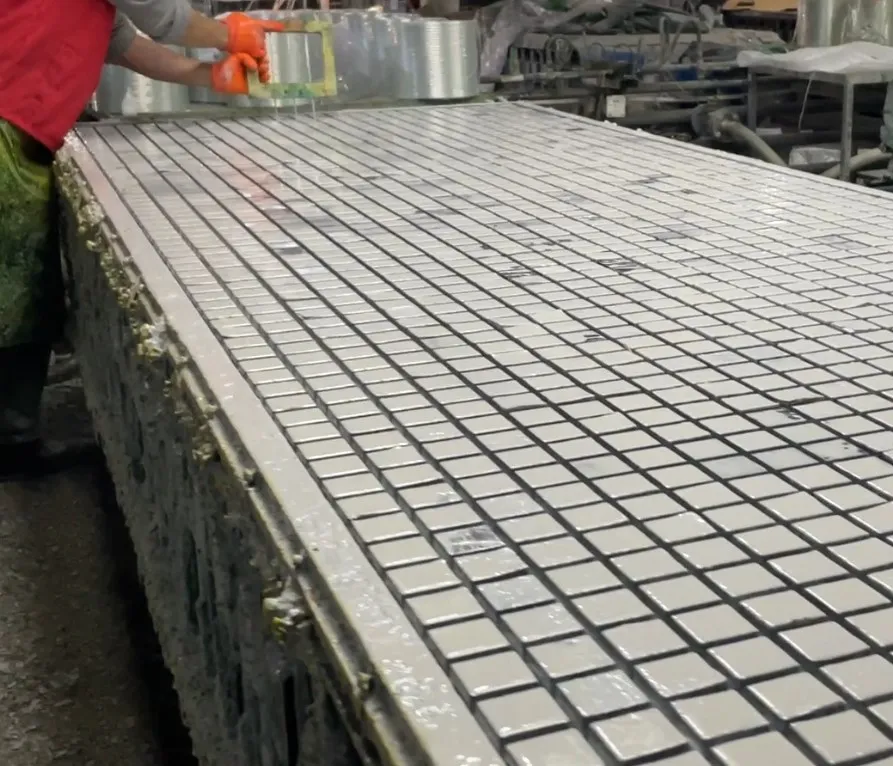loading...
- No. 9, Xingyuan South Street, Dongwaihuan Road, Zaoqiang County, Hengshui, Hebei, China
- admin@zjcomposites.com
- +86 15097380338
- Welcome to visit our website!
grp gratings
Understanding GRP Gratings A Comprehensive Overview
In various industries, the need for durable and reliable flooring solutions has led to the increased use of Glass Reinforced Plastic (GRP) gratings. GRP gratings are composite materials made from a resin matrix reinforced with glass fibers, providing a combination of strength, lightweight properties, and corrosion resistance. This article delves into the characteristics, applications, and advantages of GRP gratings.
What Are GRP Gratings?
GRP gratings are designed to replace traditional materials like steel and wood in environments where corrosion and deterioration are major concerns. They consist of molded or pultruded fiberglass reinforced with polymer resins. The unique manufacturing process allows for various configurations, such as solid, channel, or mesh designs, catering to numerous applications across different industries.
Key Characteristics
1. Corrosion Resistance GRP gratings are inherently resistant to corrosive environments, making them an ideal choice for applications in chemical plants, wastewater treatment facilities, and marine environments. Unlike metal grating, they do not rust, which extends their lifespan significantly.
2. Lightweight Compared to steel gratings, GRP gratings are approximately one-seventh the weight, which simplifies handling, installation, and transportation. This lightweight characteristic enables significant savings in labor and shipping costs.
3. High Strength-to-Weight Ratio Despite their lightweight nature, GRP gratings provide excellent load-bearing capacities. They can sustain heavy loads without compromising structural integrity, making them suitable for industrial and commercial applications.
4. Slip Resistance Safety is a prime concern in environments where fluids may accumulate. GRP gratings feature a non-slip surface texture, which enhances grip and reduces the likelihood of accidents.
5. Low Maintenance The durability of GRP gratings means they require very little maintenance. Their resistance to environmental stresses reduces the need for regular inspections or treatments, providing cost savings over time.
grp gratings

Applications of GRP Gratings
The versatility of GRP gratings makes them suitable for a wide range of applications, including
- Industrial Flooring Used in factories, warehouses, and loading docks, GRP gratings provide a safe and stable walking surface for workers.
- Walkways and Platforms Their lightweight and slip-resistant features make them ideal for constructing walkways, platforms, and access areas in various settings.
- Mold and Equipment Bases GRP gratings can support heavy machinery and equipment, ensuring stability while maintaining resistance to chemical exposure.
- Marine Applications Whether for docks, piers, or boat ramps, GRP gratings' resistance to saltwater corrosion makes them a favored choice in the marine industry.
- Wastewater Treatment In such environments, the ability to withstand corrosive substances and exposure to various elements is crucial. GRP gratings meet these needs effectively.
Advantages Over Traditional Materials
When compared to traditional materials like steel and plastic, GRP gratings offer numerous advantages. They are not only lightweight and easy to install but also reduce the risk of injuries due to slipping and intensify safety measures in workplaces. Their corrosion resistance ensures longevity, thereby decreasing replacement costs.
In conclusion, GRP gratings represent a significant advancement in material technology, combining lightweight construction with remarkable strength and durability. As industries continue to evolve and seek more efficient solutions, the adoption of GRP gratings is expected to rise, proving indispensable in enhancing safety, reducing maintenance costs, and promoting sustainability in various sectors. The versatility and reliability of GRP gratings underline their growing importance in modern applications, making them an investment worth considering for any business or project requiring robust flooring solutions.
-
The Rise of FRP Profiles: Strong, Lightweight, and Built to LastNewsJul.14,2025
-
SMC Panel Tanks: A Modern Water Storage Solution for All EnvironmentsNewsJul.14,2025
-
GRP Grating: A Modern Solution for Safe and Durable Access SystemsNewsJul.14,2025
-
Galvanized Steel Water Tanks: Durable, Reliable, and Ready for UseNewsJul.14,2025
-
FRP Mini Mesh Grating: The Safer, Smarter Flooring SolutionNewsJul.14,2025
-
Exploring FRP Vessels: Durable Solutions for Modern Fluid HandlingNewsJul.14,2025
-
GRP Structures: The Future of Lightweight, High-Performance EngineeringNewsJun.20,2025
